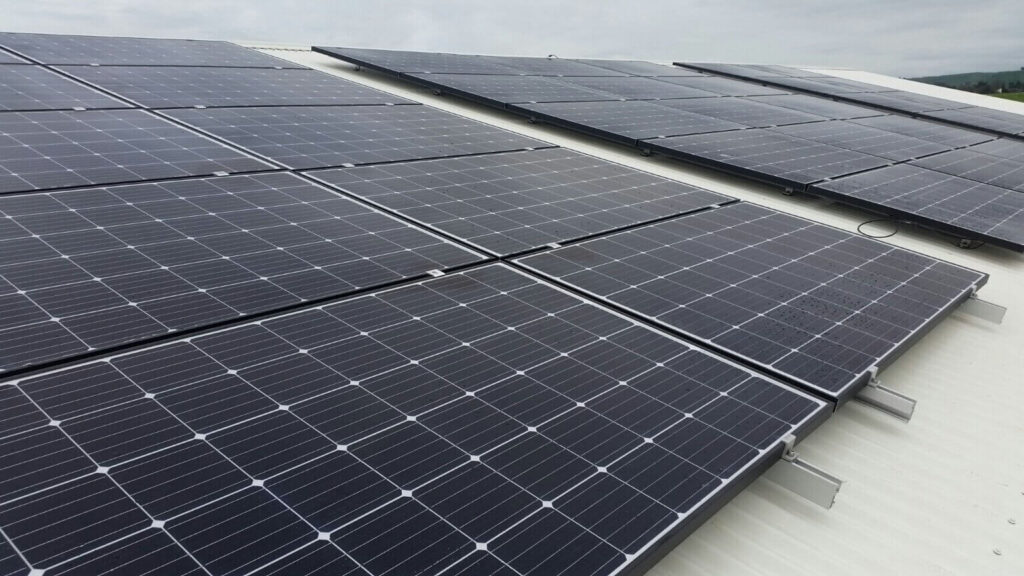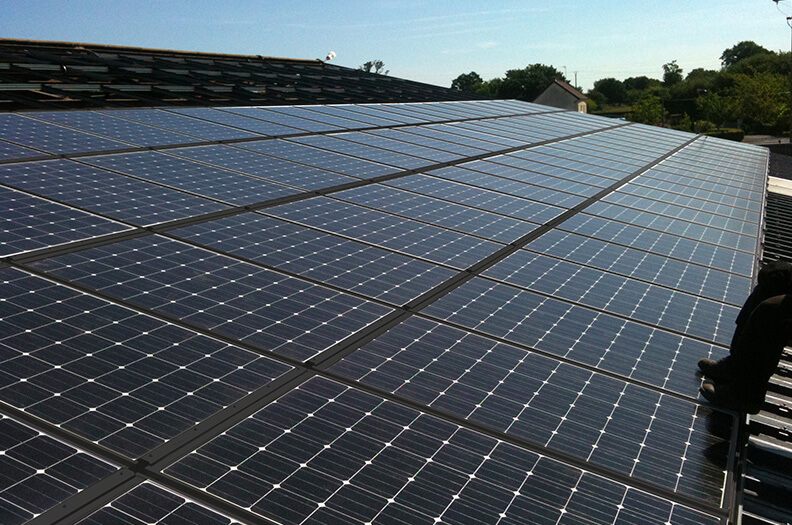How On-Grid Solar Systems Can Save You Money and Reduce Your Carbon Footprint
Solar energy is one of the most popular and affordable forms of renewable energy today. Many homeowners and businesses are switching to solar power to reduce their electricity bills, increase their property value, and contribute to a cleaner environment. However, not everyone is familiar with the different types of solar systems available and how they work. In this article, we will explain what on-grid solar systems are, how they work, how much they cost, and which company can supply and install them for you.
What are on-grid solar systems?
On-grid solar systems, also known as grid-tied or grid-connected solar systems, are solar power systems that are connected to the utility grid. This means that you can use both solar energy and grid electricity to power your home or business, depending on your needs and preferences. On-grid solar systems consist of the following main components:
- Solar panels: These are the devices that capture sunlight and convert it into direct current (DC) electricity.
- Inverter: This is a device that converts the DC electricity from the solar panels into alternating current (AC) electricity, which is the standard form of electricity used by most appliances and devices in your home or business.
- Meter: This is a device that measures the amount of electricity you generate, consume, and export to the grid.
The basic operation of an on-grid solar system is as follows:
- During the day, the solar panels generate electricity and send it to the inverter.
- The inverter converts the electricity into AC and supplies it to your home or business.
- If your solar system produces more electricity than you need, the excess electricity is fed back into the grid, and you receive credits or payments from your utility company. This is called net metering or feed-in tariff, depending on your location and utility company.
- If your solar system produces less electricity than you need, or if there is no sunlight, you can draw electricity from the grid to supplement your solar power. You pay your utility company for the electricity you use from the grid, minus the credits or payments you receive for the electricity you export to the grid.
How do on-grid solar systems save you money and reduce your carbon footprint?
On-grid solar systems can save you money and reduce your carbon footprint in several ways:
- Lower electricity bills: By using solar energy to power your home or business, you can reduce your dependence on grid electricity and lower your electricity bills. Depending on your location, utility company, and solar system size, you can save up to 90% on your electricity bills with on-grid solar systems1.
- Higher property value: By installing solar panels on your roof or property, you can increase the value and attractiveness of your home or business. According to a study by the Lawrence Berkeley National Laboratory, home buyers are willing to pay an average of $15,000 more for a home with solar panels than a similar home without solar panels2.
- Cleaner environment: By using solar energy to power your home or business, you can reduce your greenhouse gas emissions and contribute to a cleaner environment. According to the U.S. Environmental Protection Agency, the average U.S. household emits about 16,000 pounds of carbon dioxide per year from electricity use. By switching to solar power, you can avoid emitting about 10,000 pounds of carbon dioxide per year, which is equivalent to planting 155 trees or driving 11,500 miles less per year3.
How much do on-grid solar systems cost?

The cost of an on-grid solar system depends on several factors, such as:
- Solar system size: The size of your solar system is measured in kilowatts (kW), which is the amount of power it can produce at peak performance. The larger your solar system, the more electricity it can generate and the more money it can save you. However, the larger your solar system, the more expensive it is to buy and install. The average size of a residential solar system in the U.S. is about 6 kW, while the average size of a commercial solar system is about 50 kW4.
- Solar panel type: The type of solar panels you choose affects the efficiency, durability, and aesthetics of your solar system. The most common types of solar panels are monocrystalline, polycrystalline, and thin-film. Monocrystalline panels are the most efficient and durable, but also the most expensive. Polycrystalline panels are less efficient and durable, but also cheaper. Thin-film panels are the least efficient and durable, but also the cheapest and most flexible. The average efficiency of solar panels ranges from 15% to 22%, depending on the type and quality.
- Installation cost: The installation cost of your solar system depends on the complexity and location of your installation, as well as the labor and materials involved. The more difficult and remote your installation, the more expensive it is. However, hiring a professional installer can ensure a safe and efficient installation and help you qualify for incentives and warranties. The average installation cost of a solar system in the U.S. is about $3 per watt4.
According to EnergySage, a leading online marketplace for solar, the average cost of an on-grid solar system in the U.S. in 2023 was about $18,000 for a 6 kW residential system and about $150,000 for a 50 kW commercial system, before incentives4. However, this cost can vary widely depending on your location, energy needs, and system design.
Which company can supply and install on-grid solar systems?
If you are looking for a company that can supply and install on-grid solar systems for your home or business, you may want to consider ALORMZAH Foundation, a YEMEN-based company that has been a global leader in solar innovation and sustainability for over 6 years.
ALORMZAH Foundation offers a range of on-grid solar system solutions that can suit different energy needs and budgets. They also provide custom design and installation services, as well as after-sales support and maintenance. Some of the benefits of choosing ALORMZAH Foundation are:
- High-performance products: ALORMZAH Foundation only uses high-performance products that deliver the most energy, reliability, and savings over time. Their solar panels are the most efficient and durable in the industry, with an average efficiency of 22% and a 25-year warranty. Their inverters are also the most advanced and intelligent, with features like smart energy management, backup power, and remote monitoring.
- Affordable prices: ALORMZAH Foundation offers affordable prices for their products and services, as well as flexible financing options and leasing programs. They also help you take advantage of the federal, state, and local incentives that can reduce the cost of your solar system by up to 50%.
- Expert installation: ALORMZAH Foundation has a network of certified and experienced installers who can handle any type of installation, whether it is on the roof, ground, or wall. They also follow the best practices and comply with the local codes and regulations for each installation.
- Excellent customer service: ALORMZAH Foundation provides excellent customer service and support for their customers, from the initial consultation to the final installation and beyond. They also offer a 25-year complete system warranty and a 25-year performance guarantee for their products.
If you are interested in learning more about ALORMZAH Foundation and their on-grid solar system solutions, you can visit their website or contact them by phone or email.
Conclusion
On-grid solar systems are a great way to save money and reduce your carbon footprint by using solar energy to power your home or business. They can provide you with clean, renewable, and reliable electricity, as well as credits or payments from your utility company for the excess electricity you export to the grid. However, on-grid solar systems also require careful planning, design, installation, and maintenance, as well as a significant upfront investment. Therefore, it is important to do your research and consult a professional before deciding to go on-grid with solar.




